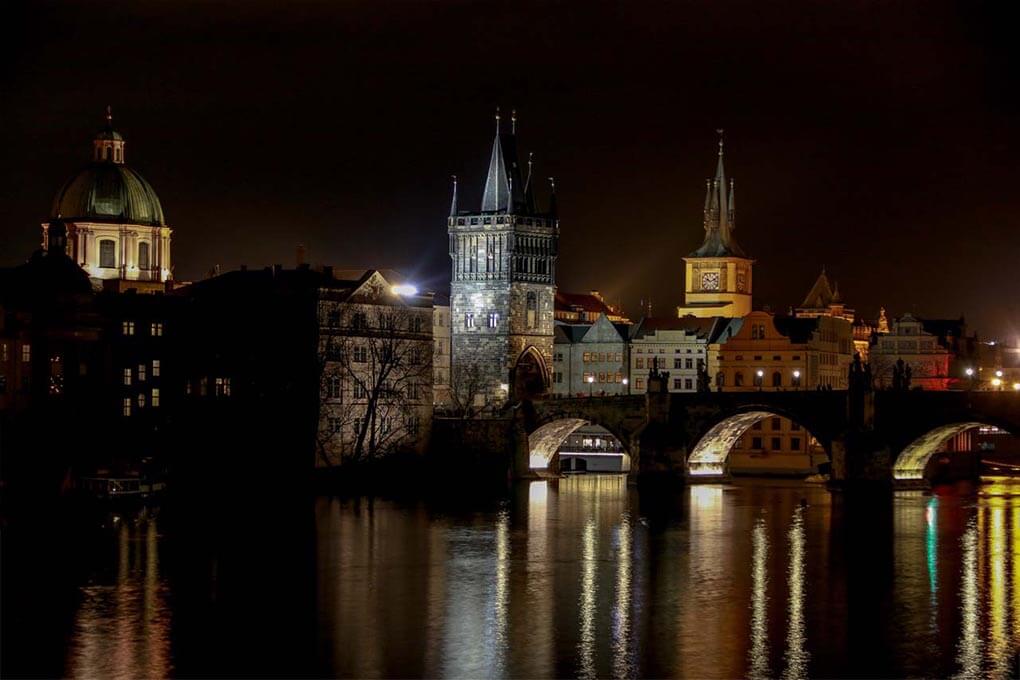
Night Photography - Capturing Cities at Night
Whilst visiting a city lots of people enjoy taking phots of the main sights such as historical buildings, monuments and squares. Most people travel from one sight to the next during the day and take snaps shots in full daylight. Many sights are even more impressive at night because they are often lit up.
Shooting historic buildings at night can bring out a unique view of the subject as the lights and shadows add life to the buildings. It is also more often quieter at night with fewer tourists, which allows you more space to find a great angle. In this article we will show you some tips on equipment and camera settings that will help you take some impressive night shots.
Recommended Equipment and Settings
role in night photography. For example, it is easier to take well-exposed night shots with a full-frame camera than with a camera using a smaller APSC sensor. Also, a fast lens will let more light onto the sensor and therefore work better in lower light.
Long exposure times are needed for taking photos at night. When shooting without a tripod, you should not use a longer exposure time than about 1/15 because of camera shake. In low-light situations, a tripod is essential as a longer exposure time is needed to gather enough light.
Camera shake can also appear just by releasing the shutter and even if the camera is securely mounted onto a tripod. This issue can be solved by using a remote shutter release or setting a 2-second timer delay.
Both the image stabiliser on the lens and the autofocus should be deactivated to avoid further risks of camera shake. The image stabiliser will not work properly while mounted on a tripod and the autofocus could change its focus point during the long exposure time, which can cause the shot to be out of focus.
Without the use of the autofocus feature, it may be helpful to activate the live view mode. You can zoom in closer to the subject to manually select a focus point. If no suitable focus point can be found the focus should be set manually to infinity.
In addition to the tripod and the remote release, the use of an ND filter is also recommended. This will darken the lens of the camera, which will not only increase the aperture by a few stops but will allow a longer exposure time.

What Settings are Recommended for Night Photography?
It is much easier to get good results when shooting with lots of light. At night however, hardly any light is emitted, therefore, you have to try to make the best possible use of the available light with the camera settings. To allow you more control of the settings, you should use manual mode.
When shooting in low light, the resulting picture often has large black areas and this is where the image noise is most visible. To prevent lots of noise in your final exposures, keep the ISO at 200 or below. Once the ISO has been set, the only remaining adjustments are the aperture and shutter speed. To compensate for the low light a wide aperture and long exposure time should be set.
For example, an f/5 aperture and a 4-second exposure time will create a nocturnal feeling and bring out the features of the building. If the depth of field in the shot seems too shallow, simply close the aperture a few stops, for example, f/13 and compensate with a longer exposure time. An exposure time longer than about 30 seconds will lighten up the sky and give the feeling of just before dawn.
Conclusion
To get the best out of night photography, it is essential to set the shutter speed and aperture correctly. There is no right or wrong setting, but each adjustment changes the effect of the final image. You can get creative and portray the subject how you wish. Having the right equipment is essential for success. A tripod is a must, however, a remote shutter release and ND filters make life easier but are not essential.
